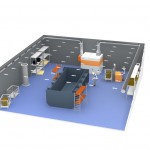Risk of heart attack due to fine dust particulate pollution higher than once thought
Fine dust increases the risk of heart attack more significantly than once thought. A new study proves how dangerous even extremely small doses of dust particles can be. The EU limit values for fine dust may be too low.
An international team of researchers examined more than 100,000 subjects from Germany, Finland, Sweden, Denmark and Italy. In the study they compared the health status of the participants with the dust concentration in their place of residence over a period of eleven years. The result: The higher the particulate concentration, the higher the risk of a heart attack.
Two categories of particles were focused on: Particles that are smaller than 2.5 micrometers (PM2.5) and those that are smaller than 10 micrometers (PM10). If the amount of PM2.5 particles rises by five micrograms per cubic meter of air or the amount of PM10 particles rises by 10 micrograms, the risk of a heart attack goes up by twelve percent. This kind of increase is definitely possible within the current EU limit values: The value is 25 micrograms for PM2.5 particles – and the value for PM10 particles is in fact 40 micrograms. This means that even when these limits are met, a significantly increased risk can be present.
Particles produced during welding are in fact even smaller. Individual particles that are produced during manual arc welding are only as big as 50 nanometers in size. The smaller the individual particles and particle chains, the deeper they can penetrate into the lungs and cause health-related damage. You can only weld in a safe manner by using suitable suction units that suck away the hazardous substances at the source of production.
The complete study can be read free of charge under the following link: http://www.bmj.com/content/348/bmj.f7412





